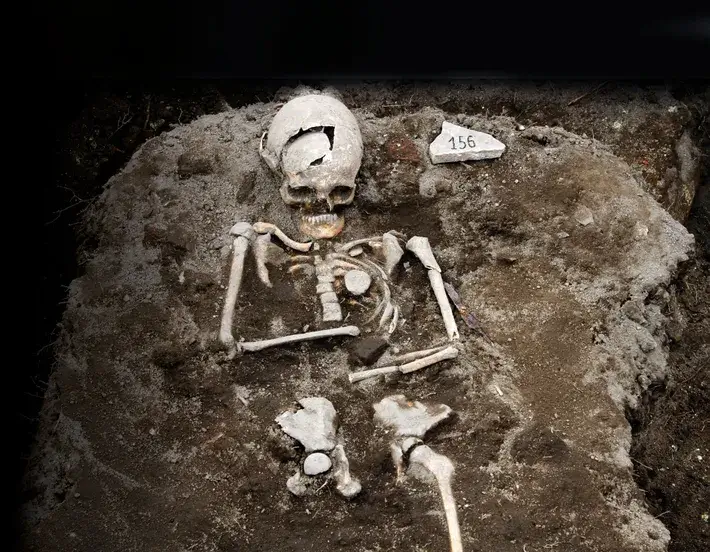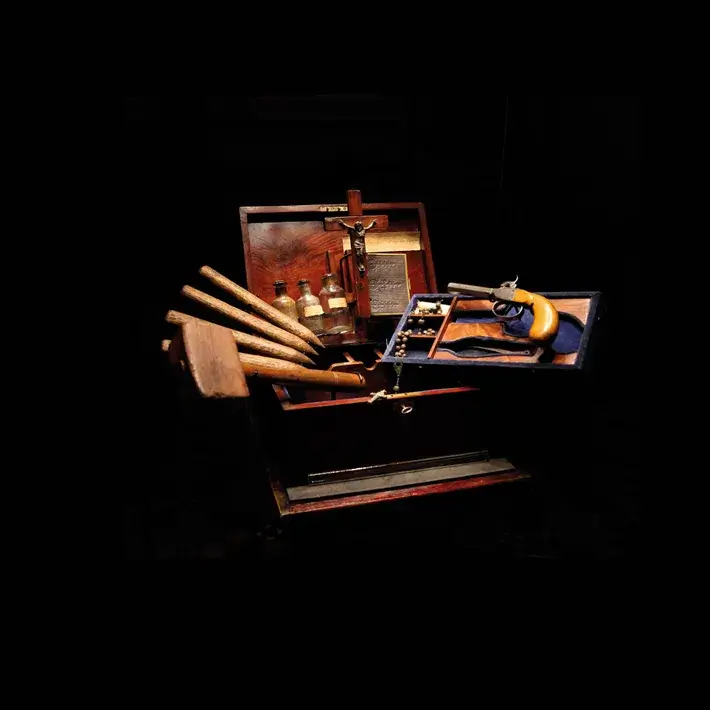
How Did 18th-Century Vampire Hunters Identify The Undead? Blood & Fingernails
Gruesome accounts from Eastern Europe, collected in a scholarly work on the supernatural, detailed the methods used to detect and destroy vampires.
By: Oscar Urbiola | National Geographic
Bram Stoker’s original manuscript of Dracula included a preface that was cut before the novel was published in 1897. In this outtake, the creator of the world’s most famous vampire believed that he was not writing pure fiction: “I am quite convinced that there is no doubt whatever that the events here described really took place, however unbelievable and incomprehensible they might appear at first sight. And I am further convinced that they must always remain to some extent incomprehensible.”
Count Dracula was the literary culmination of two centuries of a resolute belief in the undead who walked among, and attacked, the living in Eastern Europe. One of the strongest influences on Stoker, and other 19th century authors, was the work of 18th century Benedictine monk and distinguished biblical scholar Antoine Augustin Calmet.

A valuable repository for vampire lore, Calmet’s two-volume supernatural survey, Dissertations Upon the Apparitions of Angels, Daemons, and Ghosts, and Concerning the Vampires of Hungary, Bohemia, Moravia, and Silesia, was published in 1746. The author carefully collected and examined numerous reports of vampire attacks that were emerging from Eastern Europe in the late 17th and early 18th centuries. These accounts triggered an intense scholarly debate as philosophers and physicians alike sought to resolve the-disconnect between the reports’ fantastic details and their reputable sources.
Calmet’s Case Studies
Calmet acknowledged in his preface that the academic study of supernatural forces might invite criticism and derision, but he insisted that the testimonies from such reliable witnesses were too detailed and consistent to dismiss as pure delusion or outright invention. The validity of the various vampire reports, he insisted, merited careful consideration.

He documented many accounts of those who claimed to see the dead that “come back to earth, talk, walk, infest villages, ill use both men and beasts, suck the blood of their near relations, destroy their health, and finally cause their death.” These undead, he wrote, “Are called by the name of vampires.”
One of the most famous cases in Calmet’s collection came from Austrian army surgeon Johann Flückinger. The doctor described the case of Arnold Paole, a soldier and alleged vampire victim from a Serbian village. To banish vestiges of the vampire, Paole ate dirt from its grave and smeared himself with its blood. He returned to his life as a farmer, but soon after died in a hay wagon accident.
Batman Existed In Mesoamerican Mythology And His Name Was Camazotz
About a month after his death, villagers claimed that Paole had risen from the dead and killed several people. Animals and livestock were also attacked and drained of blood.
Suspecting vampirism, the villagers exhumed Paole’s body. They found it intact—even the nails had grown. Fresh blood covered the inside of the coffin. The villagers thus “drove a stake through his heart, whereby he gave an audible groan and bled copiously.” The bodies of other villagers, thought to have been also transformed into vampires, were disinterred and likewise maimed in an attempt to “kill” them for good.

Hair & Nails
The incorruptibility of a corpse was thought to be evidence that a dead person was a vampire. Calmet noted that some bodies, after several months or even years in the grave, were found with “the blood in a liquid state, the flesh entire, the limbs flexible and pliable.”
The observation was accurate, but science rather than the supernatural can explain such post-mortem phenomena. In large part, the belief in vampirism grew out of a lack of knowledge about the natural processes of decomposition after death, which can, under certain conditions, be delayed for a long period of time.
A body can remain well preserved through two natural processes; one of them, saponification, occurs when the body is buried in a cold, damp environment, as is common in Eastern Europe. During the saponification process, the body’s fatty acids turn into a waxy, soap-like compound that covers the corpse and prevents putrefaction. A saponified body also retains a certain flexibility, as described in Calmet’s work.
Accounts in Calmet’s Dissertation also noted that vampires’ hair and fingernails continued to lengthen even after death. Certain postmortem changes may have given the illusion of continued growth. After death, the skin dehydrates, causing it to retract from the hair follicles. This may make the hair, especially stubble on the chin, look longer. The same is true of nails, as the skin around them retracts and makes more of the nail bed visible.
Blood of The Vampire
Bloodstains on an unearthed corpse was also a sign that someone had become a vampire. As Calmet explained, “[Vampires] suck the blood of living men or animals in such abundance that sometimes it flows from them at the nose, and sometimes the corpse swims in its own blood oozed out in its coffin.”
Again, medical science can provide an explanation. The length of time that blood remains liquid depends on environmental conditions. In cold temperatures the blood can stay fluid for at least three to four days. If bodies were unearthed during that period on suspicion of vampirism, blood could still be found in their veins. Stories of corpses being stained with blood or “swimming” in blood (the latter likely an exaggeration) may have been derived from postmortem hemorrhages.
A blow to the body during transfer to its resting place can result in a trauma sufficient to make blood appear to flow from the nose or mouth.
Cry of The Undead
As illustrated by the story of Arnold Paole, popular belief held that to kill a vampire, the corpse had to be disinterred and pierced with a stake. Allegedly, when the stake penetrated the body, the vampire would let out a cry, further proof that the vampire had been alive. But a natural explanation pertains to this too.
Air enclosed in the thoracic cavity, forced out when the body was struck, was likely to produce sound as it passed through the throat. Already believing they were face-to-face with an undead vampire, this noise could have sounded like a cry of pain to witnesses. In a situation of great tension, the imagination could amplify the slightest of noises to a blood-chilling moan.
In 1762 philosopher Jean-Jacques Rousseau incredulously attacked Calmet’s work. He noted: “If there is in this world a well-attested account, it is that of vampires. Nothing is lacking: official reports, affidavits . . . of surgeons, of priests, of magistrates. And with all that, who is there who believes in vampires?”

Rousseau may have doubted, but the supernatural belief that the dead could rise to terrorise went beyond reason in 17th and 18th century Eastern Europe. Calmet’s collection of vampire stories fed the imagination and inspired the imaginations of several 19th century authors—John William Polidori, Joseph Sheridan Le Fanu, and Bram Stoker—who all helped pioneer the vampire story as a popular literary genre.
* * *
NEXT UP!
Is There Truth To The Legend of The Sword In The Stone? (Video)
The legend of King Arthur and the Sword in the Stone has captured the imaginations of people for centuries.
The story of a young boy who proves his rightful claim to the throne of Britain by pulling a sword out of a stone has become a beloved tale.
But was this story simply a myth, or did it have a basis in reality?
* * *
READ MORE: Blood & Mortar: The Killer Architecture of Hitobashira
Read more on Myths & Legends: Herne The Hunter: Hooded Forest God of Britain
Liked it? Take a second to support Collective Spark.
We’d love to hear from you! If you have a comment about this article or if you have a tip for a future Collective Spark Story please let us know below in the comment section.
